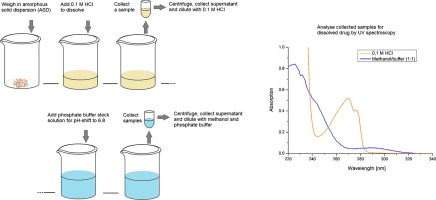The influence of polymer excipients on the dissolution and recrystallization behavior of ketoconazole

The formulation of amorphous solid dispersions (ASDs) is an effective way to improve the bioavailability of poorly water-soluble active pharmaceutical ingredients (APIs). The combination of an amorphous state of the drug and the presence of crystallization-inhibiting polymers retains a high amount of dissolved API over time. ASDs with ketoconazole and different polymers were manufactured by spray drying and their characteristics as well as performance were analyzed. Dissolution tests with a change of the dissolution medium from 0.1 M HCl to phosphate buffer at pH 6.8 to simulate pH conditions for instant release formulations, and a direct dissolution of the ASDs in phosphate buffer pH 6.8 to simulate conditions for an enteric formulation, were performed. All ASDs with API contents between 25 and 50 % by weight were completely X-ray amorphous. Varying dissolution behaviors between medium change and direct dissolution occurred. It was possible to identify the superior ASD-compositions for both types of tests. The acidic polymers methacrylic acid-ethyl acrylate copolymer, hypromellose acetate succinate and the solubilizer macrogolglycerol hydroxystearate showed the best performances. The combination of the acidic polymers with macrogolglycerol hydroxystearate showed an improved dissolution behavior at higher API contents. The optimization of such formulations with different release-patterns plays an important role for the enhancement of the oral bioavailability of poorly water-soluble drugs.

